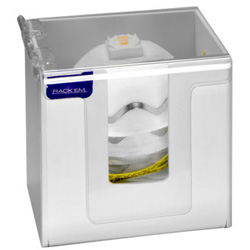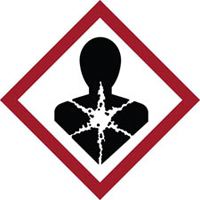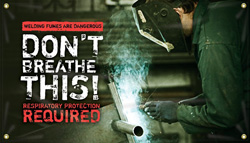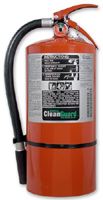| The Home page of ILPI's Safety Data Sheet (SDS) Resource, the leader in SDS information since 1995! | |
| The history and philosophy behind this resource. | |
| A curated collection of books and reference materials concerning Safety Data Sheets and closely related topics. | |
| Paste your plain text SDS into the SDS-Demystifier, and it will be converted into a hypertext-enriched document with links to detailed explanations of each key term. | |
| An extensive list of frequently asked questions about Safety Data Sheets including regulations, content, compliance, and more. | |
| A humorous take on Safety Data Sheet jargon. Fill in the blanks on our entry form to generate a personalized Unsafety Data Sheet to share with your coworkers. | |
| Since 1995, we've maintained this massive curated list of the best places to find Safety Data Sheets on the Internet. | |
| You are here! Way more than a glossary, this hypertext-enhanced resource covers hundreds of SDS-related terms and expert knowledge. Each entry includes both the SDS relevance and links to additional authoritative resources. | |
| Archived results of Safety Data Sheet related polls taken by some of our millions of site visitors | |
| The OSHA regulations behind SDS regulations, including the inspection guidelines and over 400 official interpretations letters under the Hazard Communication Standard | |
| Commercial suppliers of SDS authoring and management software as well as cloud compliance services. | |
| Commercial companies that will create SDS's for your specific needs as well as SDS translation companies. |

Safety signs, banners, and scoreboards? Get yours at Safety Emporium!
Definition
A dust is fine (small) particles of dry matter. Dusts can be generated by handling, crushing, grinding, rapid impact, detonation, and breakdown of certain organic or inorganic materials, such as rocks, ore, metal, coal, wood, plastic, and food grains.
Dusts can form a cloud or suspension in air, but the material tends to settle to the ground evenly rather than diffuse (migrate) throughout an area like a vapor. Dusts do not tend to flocculate (clump together in fluffy masses). The term fumes is sometimes used to refer to airborne dusts.
Dusts are different than vapors and mists. Dusts are comprised of solid particles, each of which consists of large number of atoms or molecules of a material that is not normally volatile. Of course, dusts and vapors may sometimes be intermingled.

Make your PPE readily available with safety dispensers from Safety Emporium.
Additional Information
Dust particles may be small enough that they are respirable, capable of being drawn deep into the lungs when you take a breath. Some dusts, such as certain forms of asbestos and coal dust, remain lodged deep inside the lungs where they can eventually cause cancer or other chronic health effects such as emphysema, pneumoconiosis and bronchitis. For example, the American Cancer Society has stated that exposure to asbestos in combination with cigarette smoking increases an individual's lung cancer risk nearly 60 times. At the very least, most dusts are respiratory irritants.
Even "natural" products such as moldy hay, bird droppings etc. contain spores that can cause a variety of nasty lung diseases as well. Woodworkers should pay attention to Clarification of OSHA's Hazard Communication Standard with regards to the carcinogenicity of wood dust, too.
Combustible Dust: An Insidious Hazard
Other dusts can form explosive mixtures in air. One doesn't ordinarily think about everyday items such as flours or grain as being explosive. But when these combustible materials are reduced to a dust, they have an extremely high surface area and can burn quite rapidly. When the concentrations of air and dust fall within the explosive limits and are ignited, the resulting fire and explosion can be astounding. Essentially any material that can burn can explode as a dust!
Grain dust explosions are quite powerful and often deadly. Take a look at the aftermath of a deadly accident. FM Global posted a short video of a live dust explosion to demonstrate the power of such explosions.
A 2006 study by the US Chemical Safety Board found 281 dust fires and explosions over a 25-year period that took 119 lives and caused 718 injuries. 24% of those were in the food industry. 71% of the incidents resulted in injuries or fatalities. See why an SDS for sugar isn't as silly as most people think? In 2018, the CSB identified another 105 combustible dust incidents that occurred since the 2006 study.
According to the NFPA, a catastrophic explosion can occur from as little as 1/32 inch (0.8 mm) of accumulated dust, around the thickness of a dime, covering just 5% of a room's surface area.
Dust explosions differ from conventional fires in that they require five elements rather than three:
- The presence of a combustible dust. The materials can be organic, or even a powdered metal such as aluminum or magnesium. Particle size plays a key role here. Smaller particles have larger surface areas, which makes them more chemically reactive and easier to ignite
- There must be a source of oxygen, usually air.
- The dust must be dispersed into the air. This can happen during mixing and transfer operations, for example.
- There must be a source of ignition. In many cases, the dust can generate its own static electricity and in others, an open flame or spark could cause ignition.
- Confinement. Most buildings, process equipment, and ventilation ductwork offer sufficient containment to turn a fireball into an explosive situation.

Keep in mind that dust explosions can kick up even more dust, making them auto-catalytic in nature, and greatly increasing the force of the original event.
Combustible Dust: Regulations
In light of the 2006 CSB study mentioned above, there were calls for OSHA to issue a combustible dust standard. A rather polarized debate attracted attention in the US Congress, and finally, in 2009, OSHA announced it was initiating a comprehensive rulemaking on combustible dust. On November 10, 2009, OSHA published an advanced notice of proposed rule-making covering dust in the workplace which began with informal stakeholder meetings in Washington, DC from December 14th, 2009 through April 2010. This was followed by an expert forum in May of 2011. Unfortunately, the next step of the rulemaking process, convening of a Small Business Regulatory Enforcement Fairness Act (SBREFA) panel to ensure that any such regulation would not unduly burden small businesses, was postponed repeatedly and OSHA formally withdrew its rulemaking proposal on March 30, 2017.
While a Combustible Dust Standard for general industry is now unlikely under the current political climate, OSHA has incorporated combustible dusts into other regulations, most notably 29 CFR 1910.1200, the OSHA Hazard Communication Standard, which regulates the content of SDS's. Specifically, the standard defines a combustible dust as a hazardous chemical meaning that such characteristics must be taken into account when performing the hazard classification process.
Still, this is a far cry from comprehensive legislation that would require workplaces to come up with a dust control plan and install infrastructure (ventilation equipment, monitoring etc.) that could prevent deadly dust explosions. To keep informed about updates to the rulemaking process see the Chemical Safety Board's rulemaking watch on OSHA's Combustible Dust Standard.
Books Available
NOTE: We may collect a share of sales or other compensation from the links in the following list:

Get your GHS-compliant labels and signs from Safety Emporium.
- Guidelines for Combustible Dust Hazard Analysis 1st Ed, Hardcover, 256 pages, 2017. Estimated price $133.99. Info and/or order.
- "Dust Explosion Prevention and Protection: A Practical Guide", Hardcover, 300 pages, 2002. Estimated price $181.35. Info and/or order.
- "Dust Explosions in the Process Industries, Third Ed", Hardcover, 700 pages, 2003. Estimated price $190.61. Info and/or order.
- "Woodshop Dust Control: A Complete Guide to Setting Up Your Own System", Paperback, 2002. Estimated price $19.79. Info and/or order .
- "Workshop Dust Control: Install a Safe, Clean System for Your Home Woodshop", Paperback, 136 pages, 2010. Estimated price $18.97. Info and/or order.
- "Dust Control Handbook for Industrial Minerals Mining and Processing", Paperback, 314 pages, 2013. Estimated price $26.99. Info and/or order.
- "Best Practices for Dust Control in Metal/Nonmetal Minings", Paperback, 82 pages, 2013. Estimated price $4.03. Info and/or order.
SDS Relevance

Welding fumes are also a respiratory hazard. Remind your employees with safety banners from Safety Emporium.
If applicable, Safety Data Sheets will provide information regarding how to avoid the formation of dust or precautions you should take when working with dusts of the material. Three general ways to avoid being exposed to dusts are:
- Control dust at its source using engineering controls. This can involve using a dust collection system on a grinder or saw or simply wetting the material with water. If you do not generate airborne dust in the first place, it can't pose an inhalation hazard.
- Local exhaust ventilation provided by a ventilating blower or fume extractor can remove any dust that gets into the air and help keep the concentration to more acceptable levels.
- Appropriate personal protective equipment (PPE) such as dust masks or respirators when working with dusts of any nature, but especially those that are hazardous. Also, wear goggles to minimize damage to your eyes.
The 2012 update to OSHA's Hazard Communication Standard classifies combustible dusts as hazardous chemicals. Therefore, if the substance presents such a hazard, the SDS should inform you. Broad classes of products that pose a combustible dust hazard include agricultural products, carbonaceous dusts, chemical dusts, metal dusts, and plastic dusts. OSHA has a handy fact sheet that lists products and materials with combustible dust explosion potential.
Further Reading

Protect sensitive electronic and laboratory equipment with Ansul CleanGuard extinguishers from Safety Emporium.
- OSHA's web site on combustible dust. Be sure to check out their downloadable posters and fact sheets.
- OSHA's Fact Sheet Protecting Workers from Combustible Dust Explosion Hazards.
- A March 25, 2013 OSHA Interpretation letter titled Request for Interpretation of OSHA's Hazard Communication Standard for Combustible Dust
- Combustible Dust: An Insidious Hazard, a 30 minute video presentation by the US Chemical Safety Board. Additional videos can be found on CSB's video archive page.
- Dust Explosion Propagation: Myths and Realities at Fike.
- The Merck Manual has examples of hypersensitivity pneumonitis, which are causes of occupational lung disease.
- OSHA maintains a page with useful information about wood dusts including links to their carcinogenicity potential.
- The US MSHA has a page on Controlling Respirable Coal Mine Dust in Underground Mines
- The US CDC has a publication titled Best Practices for Dust Control in Metal/Nonmetal Mining.
- Black lung disease is still killing miners. The coal industry won't hear it from The Guardian.
- Health Hazards Associated With Bird And Bat Droppings at the IL Department of Public Health discusses the dustborne diseases cryptococcosis and histoplasmosis.